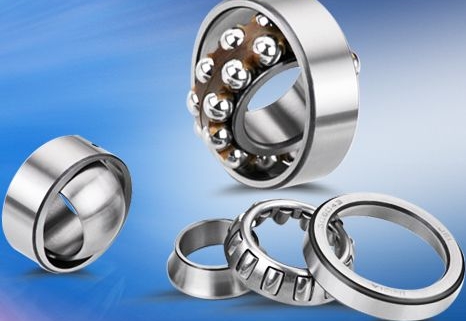What properties do machine tool spindle bearings need to have?
The spindle bearings of CNC machine tools usually use rolling bearings, which rely on rolling elements to rotate. The bearing is equipped with an element consisting of several spheres, such as balls or steel balls made of ceramic material. They are used to bear axial and radial loads and ensure the operating performance of the turntable. Different types of rolling bearings can be selected according to different working conditions and usage requirements.
Specific types include thrust ball bearings + cylindrical roller bearings, hydrostatic bearings + precision cylindrical roller bearings and crossed roller bearings. These bearings can withstand axial, radial and rotational forces. In addition, depending on the performance requirements of rolling bearings, bearings made of advanced materials such as hybrid ceramic ball bearings can also be used. Because this type of bearing has low density, high elastic modulus, small thermal expansion coefficient, wear resistance, high temperature resistance and other properties, it is an ideal choice for manufacturing high-speed precision bearings.
In addition, for heavy machine tools or powerful cutting machine tools, the load-bearing capacity of the bearings can be considered first. In addition, the machine tool spindle support needs to reach P5 level or above precision, and the slewing bearing needs to reach P4 level or above.
The spindle support is one of the core components of the machine tool, and its performance is directly related to the working efficiency, accuracy and stability of the machine tool. Therefore, the spindle support needs to have the following properties:
- High rigidity: The spindle support needs to be rigid enough to withstand cutting forces and vibrations to ensure processing accuracy and stability.
- High accuracy: The positioning accuracy and rotation accuracy of the spindle support have a great influence on the processing accuracy of the machine tool.
- High-speed operation stability: During high-speed operation, the spindle support needs to withstand high centrifugal force, so it needs to have good high-speed operation stability to avoid vibration and imbalance.
- Long service life: Spindle bearings need to have a long service life to reduce replacement costs and downtime.
- Good lubrication: The spindle support needs a good lubrication system to ensure its long-term efficient operation and avoid failures caused by poor lubrication.
- Easy to install and maintain: The spindle bracket needs to be easy to install and maintain to reduce failures caused by improper installation or maintenance.
When selecting machine tool spindle bearings, you must first pay attention to the type of bearing and select the correct bearing type according to the working conditions of the spindle. Secondly, the appropriate bearing model should be selected based on the load, speed and accuracy of the spindle bearing. Generally, high load and low speed applications require the use of low clearance, high load and high precision bearings, while for high speed and light load applications, high clearance, low load and low precision bearings are usually used.
When selecting bearings, you should also consider the service life and maintenance costs of the bearings, and choose bearings with longer service life and lower maintenance costs. Finally, the appropriate bearing installation size should be selected based on the actual size of the spindle. If the spindle has excessive axial force or radial force, it is also necessary to select bearings with special seal designs accordingly to ensure long-term use of the bearings.



